Cotton is part of the broader California agricultural system wherein shifting practices opens pathways for whole systems regeneration. For the past year, and throughout a planting cycle, Fibershed has been visiting cotton growers throughout Northern and Central California in an effort to understand the system as it is. This is an examination formed through proximity and a commitment sealed through mutuality: we share the responsibility from soil to skin to deconstruct the narratives around this favored fiber and dig deep into what it could look like to restore the soil undergirding this system. This series on cotton explores the stories of several innovators and creative minds, examining cotton as it is in our home community to understand our collective opportunity to shift practices from soil to soil.
Photographed by Paige Green
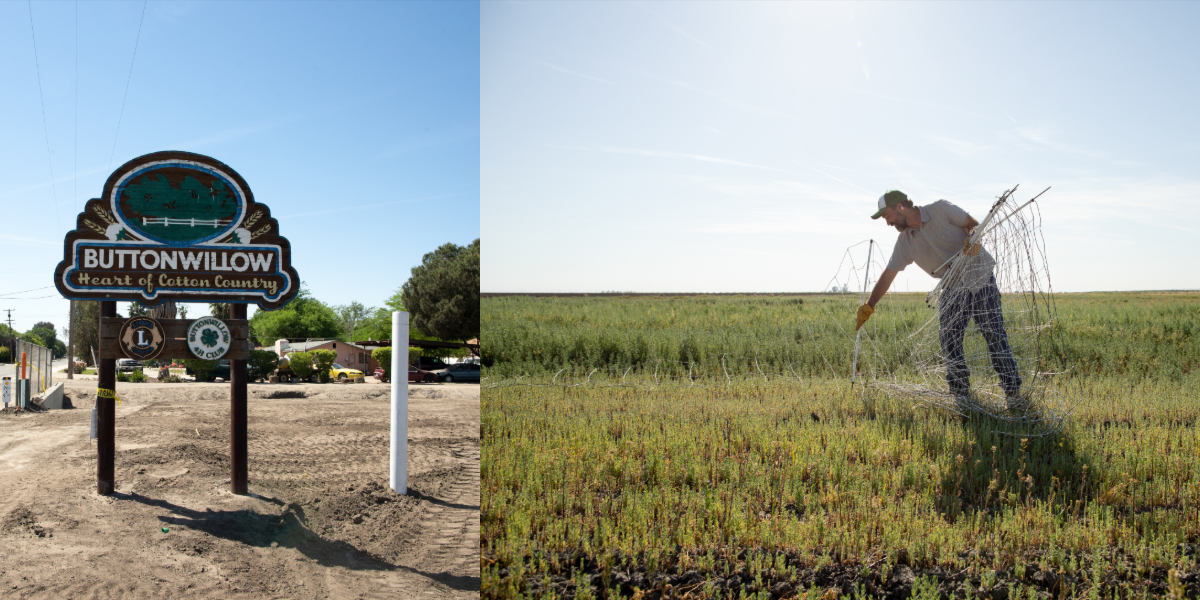
In the ‘heart of cotton country,’ Nathanael Siemens is breaking out of business as usual to explore how regenerative agriculture practices could apply to cotton systems.
Nathanael Siemens wants to bring regenerative and organic cotton to the San Joaquin Valley. He spends his mornings just walking the fields, trying to figure out what to do next, how to overcome the challenges that he faces daily from weed control to irrigation to simply getting a hold of enough seeds.
“I’m not sure if I’ll pull it off but I’m sure trying,” he jokes. “Thankfully I’ve got friends who entertain my crazy ideas.”
Regenerative cotton is not exactly unheard of, but in the context of California where Siemens has had trouble tracking down non-GMO seeds to sow Pima cotton on his 10-acre plot, it’s a big lift.
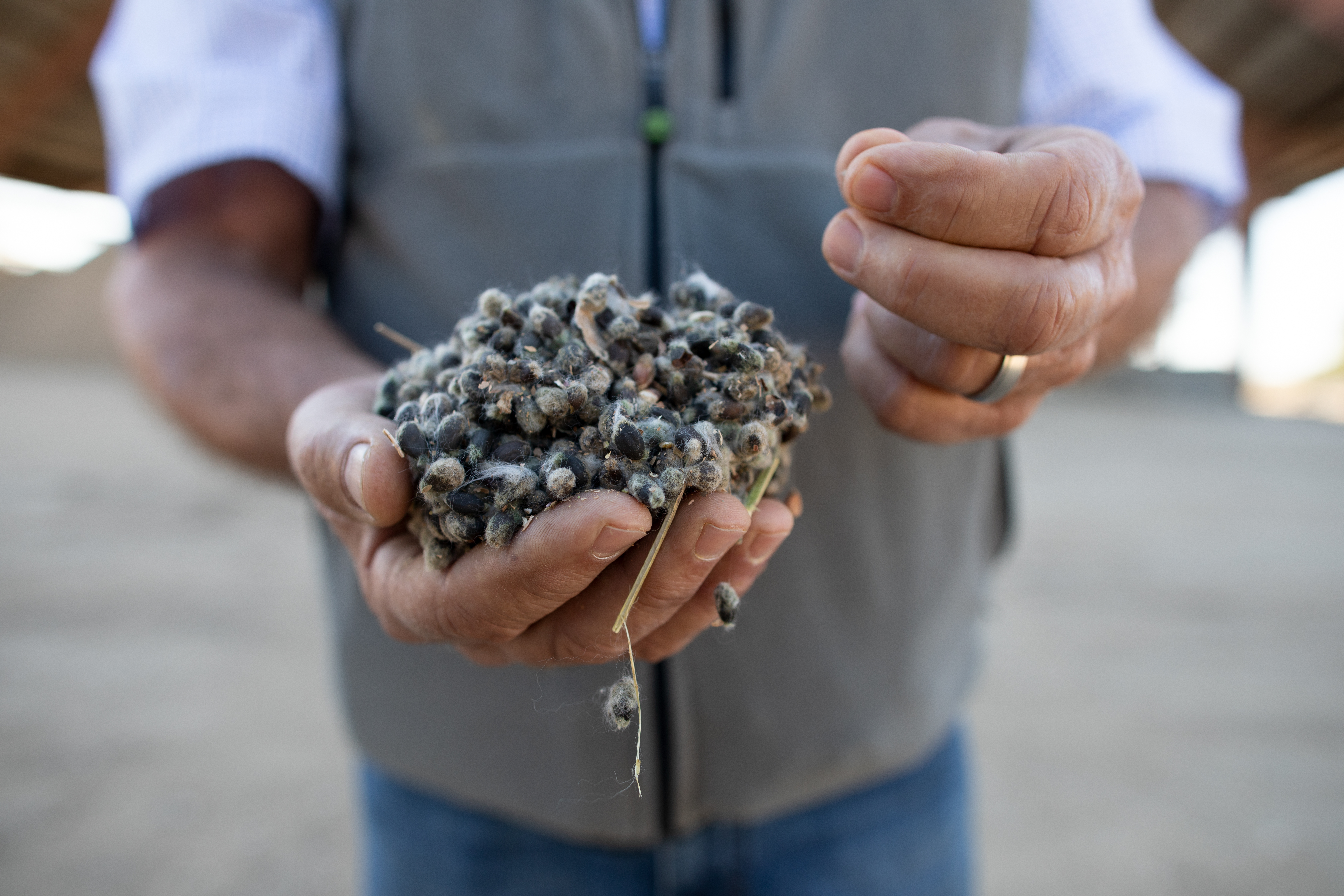
From shirts to sheets, all cotton textiles begin with a seed, and in Siemens’ model project, sourcing those seeds was a challenging start.
“Everything we were coming across in California was genetically modified and chemically treated,” he says. “It’s really incredible that we had to go to Arizona and New Mexico to get enough for just 10 acres. Otherwise, it’s all GMO or Round-Up ready. So my neighbor’s field doesn’t have a single weed in it, which is a very different situation from how we farmed cotton years ago.”
But that’s the beginning of his journey towards regenerative cotton farming. With more cemented relationships with organic cotton producers in the West, he’s confident that he’ll be able to get more seed for the coming year.
Siemens is not new to farming. The son of a third-generation farmer in California, he recalls finding a picture from 1923 of his great grandfather standing in the fields. He grew up farming and his family had been in the cotton business during his childhood. But in 1992, that family farm went under, he says. “It was a time of ‘go big, or go home.’”
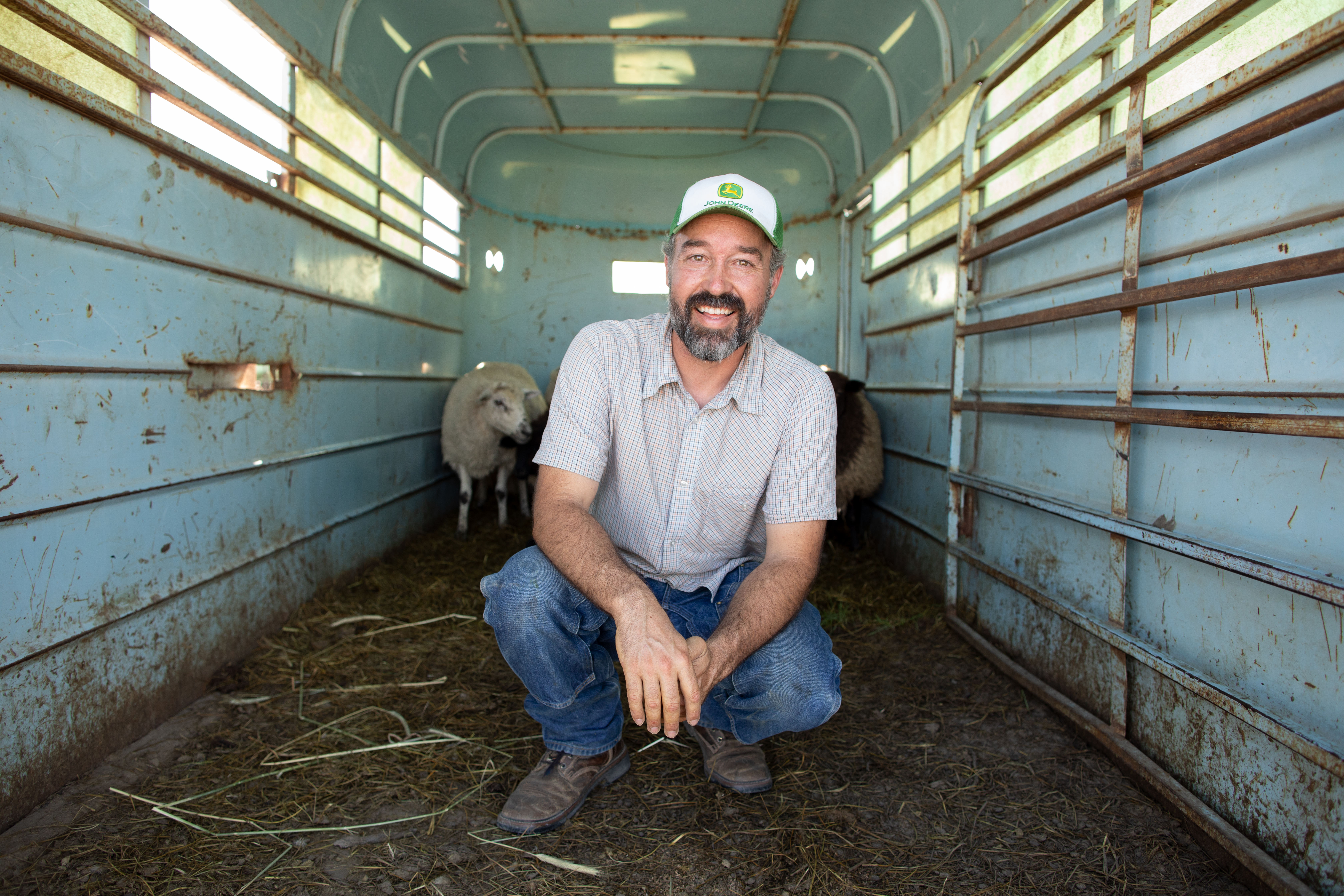
From a multi-generational lineage of California farmers, Nathanael Siemens is innovating production practices with the goal of improving soil health.
Yet Siemens kept coming back to agriculture:“I spent summers in college, working on friends’ farms and doing a variety of jobs that kept me connected to farming.” It’s through this network of farming friends that he’s been able to lease a new plot of land where he can experiment, he says. “Buying land out here is out of the question.”
Last year, inspired by a soil health training featuring regenerative farmer Gabe Brown, he decided to take on cotton. “We’d been growing a bunch of other crops and raising livestock but cotton, cotton is the holy grail. If we can do cotton, that would be cool.” So he sketched a theoretical design to a “regenerative” cotton farm, though he’s hesitant to call his 10-acre plot a true model of these principles.
“For me, regenerative means that growing that crop improves everything it touches on the farm,” he says. “With cotton, it’s not that simple. We have some components of regenerative, but there are gaps.”
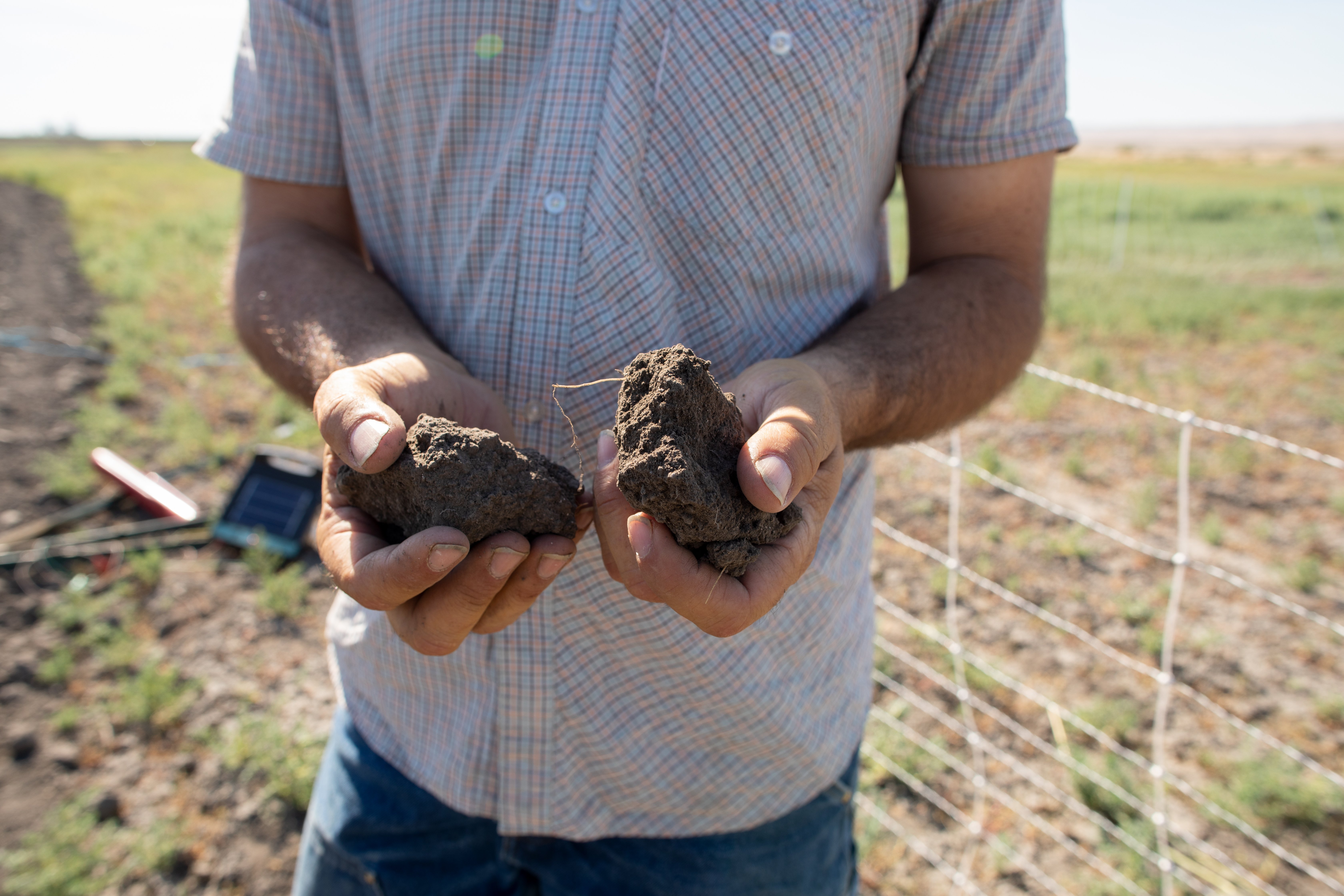
Soils in the San Joaquin Valley face issues including salination and depleted organic matter — by building soil carbon stocks, farmers could solve for several challenges.
These include salinity: growing cotton is not having a positive effect on the salinity of the soil, he notes. Same for the water cycle: it’s drawing water from the aquifer, not recharging it.
Only a year into his journey on building a regenerative ecosystem for cotton, Siemens has had his setbacks. Aside from seed, Siemens notes that traditionally, cotton is heavily tilled for weed control and water management. To do a no-till model is challenging since cotton thrives in clay soils that are highly saline. “But those same soils are not irrigable unless you’re tilling them. They crack and allow water to pass through easily,” he explains.
One of the successful practices in his model, however, has been integrating livestock in cotton. They helpfully munch on the cover crops he has seeded, depositing their fertile (and microbe-rich) manure onto the field in return. And ruminants could be even more useful in one of the most essential aspects of growing cotton: defoliation. The balls of cotton, typically photographed near harvest, are hidden under a cluster of leaves. These leaves will break down with frost, but in the San Joaquin Valley where Siemens is working, that frost-induced senescence, he says, is not an option. The second option, often practiced by conventional farmers, is to add a chemical or salt. But that doesn’t align with his values or methods as he strives for a regenerative system. “The farther we can move away from that, the better,” he says.
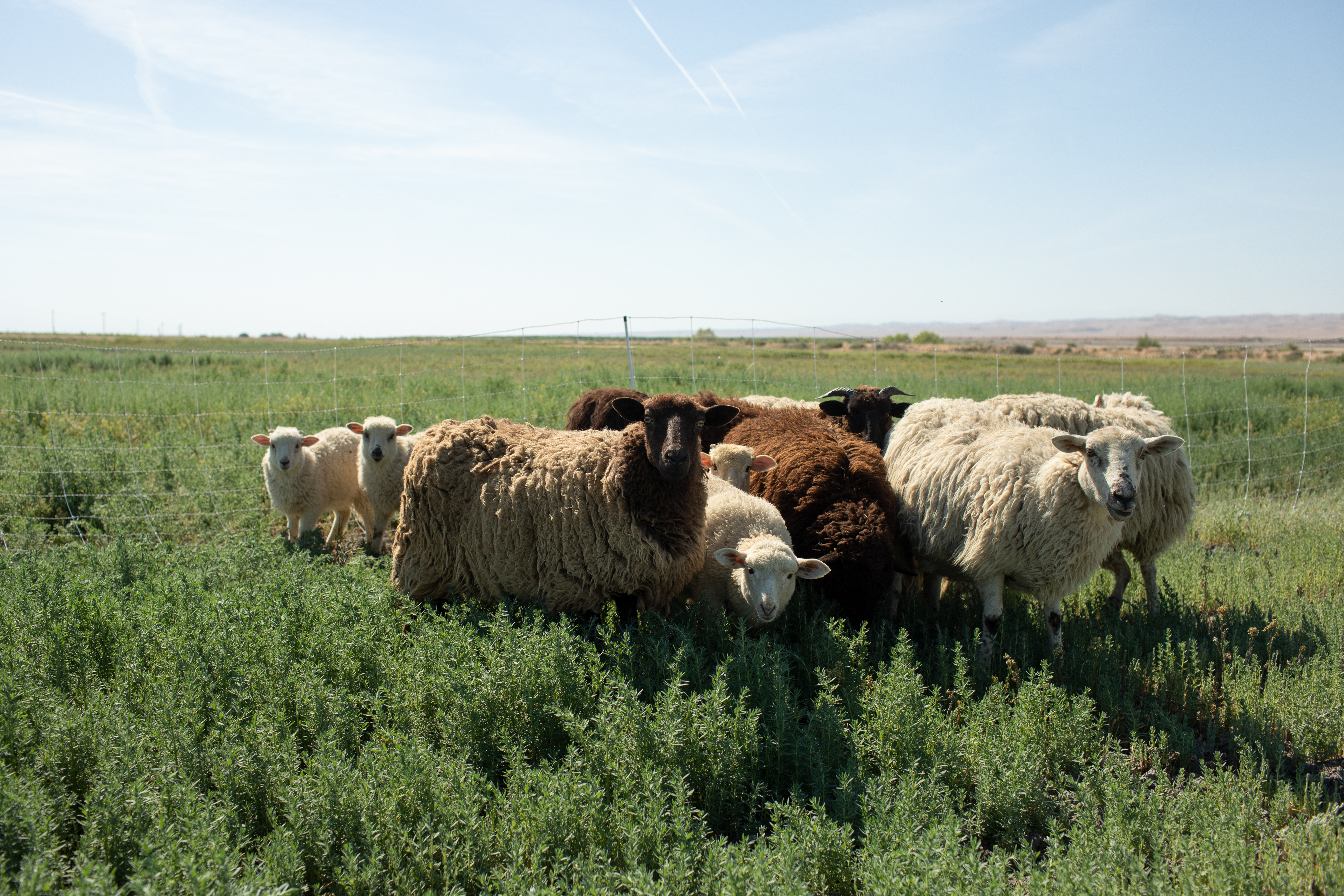
Integrating livestock, like sheep, offers a way to “mow” cover crop greenery and fertilize the fields in one fell swoop.
So he’s turning to sheep as an alternative. Trained sheep can actually graze the leaves off the plants. Or even small cattle, he says: “Small enough to not damage the crop.”
Dr. David Johnson and Sally Fox, among a cohort of agricultural experts, have been advising Siemens on non-traditional routes he can take with this cotton experiment. Johnson, who is most well-known for BEAM (biologically enhanced agriculture method) compost, has shown that his fungal-dominating compost can produce higher yields of cotton compared to nitrogen-fed cotton.
During a four-and-a-half-year trial, Johnson documented a significant increase in active soil fungal biomass. This translated to more carbon sequestration: an estimated 38,000 pounds of CO2 per acre per year. That spike in soil carbon increase was even higher than in the no-till soils he tested. As a result, the cotton from Johnson’s plot was 6 feet high, producing 5 bales of cotton per acre, completely free of fertilizers, herbicides, and insecticides. Siemens is putting Johnson’s concept to work, building the technology, known as a Johnson-Su bioreactor, on his farm.
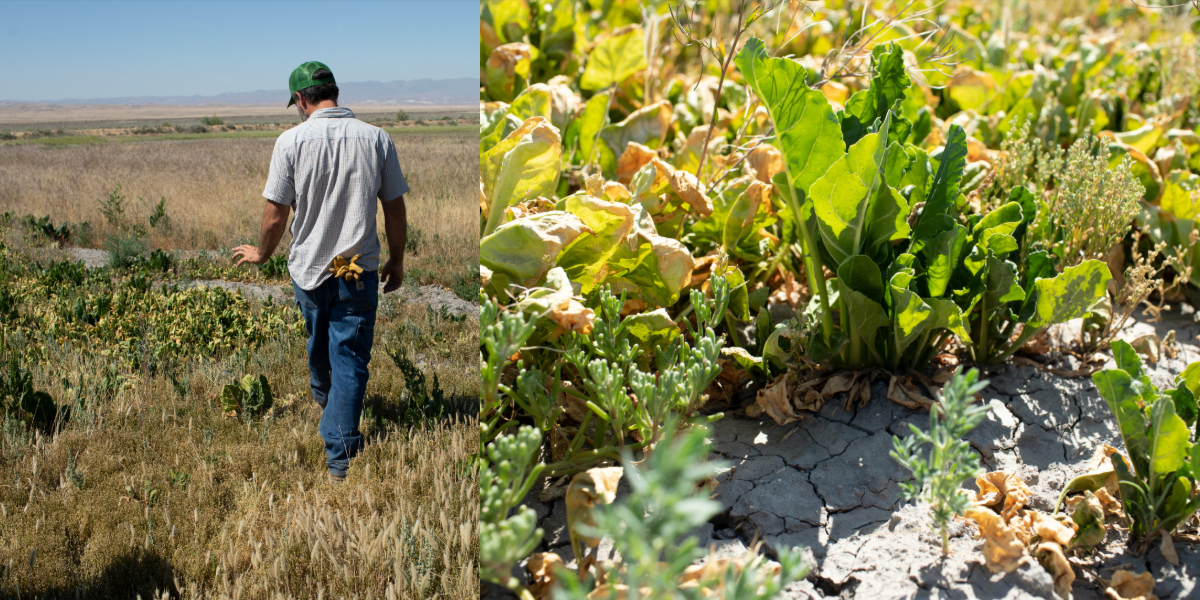
The path to improving soil health in cotton fields begins with identifying agricultural practices, like multi-species cover cropping, that enhance ecological function.
Thus, despite the challenges he is facing, Siemens is hopeful that he can produce a model for cotton that improves the health of the agroecological systems at work, from soil to water to carbon. “I’m giving it a 50-50 chance. I haven’t thrown out the possibility. If we can get some equipment that works for our context, that would help. We’re adapting existing technology — no-till drills, adapting roller crimps. If we can get those to mostly cover the problems that we are encountering, the margins can be made up,” he says, referring to the economics of this model.
So far, the model is moving ahead thanks to this mix of integrating methods, technologies, and partners: Siemens is part of a collaborative effort to evaluate the economic and ecologic impact of regenerative practices in cotton systems, which includes the Center for Regenerative Agriculture and Resilient Systems at Chico State, the National Center for Appropriate Technology, UC Cooperative Extension in Kern County, and Fibershed.
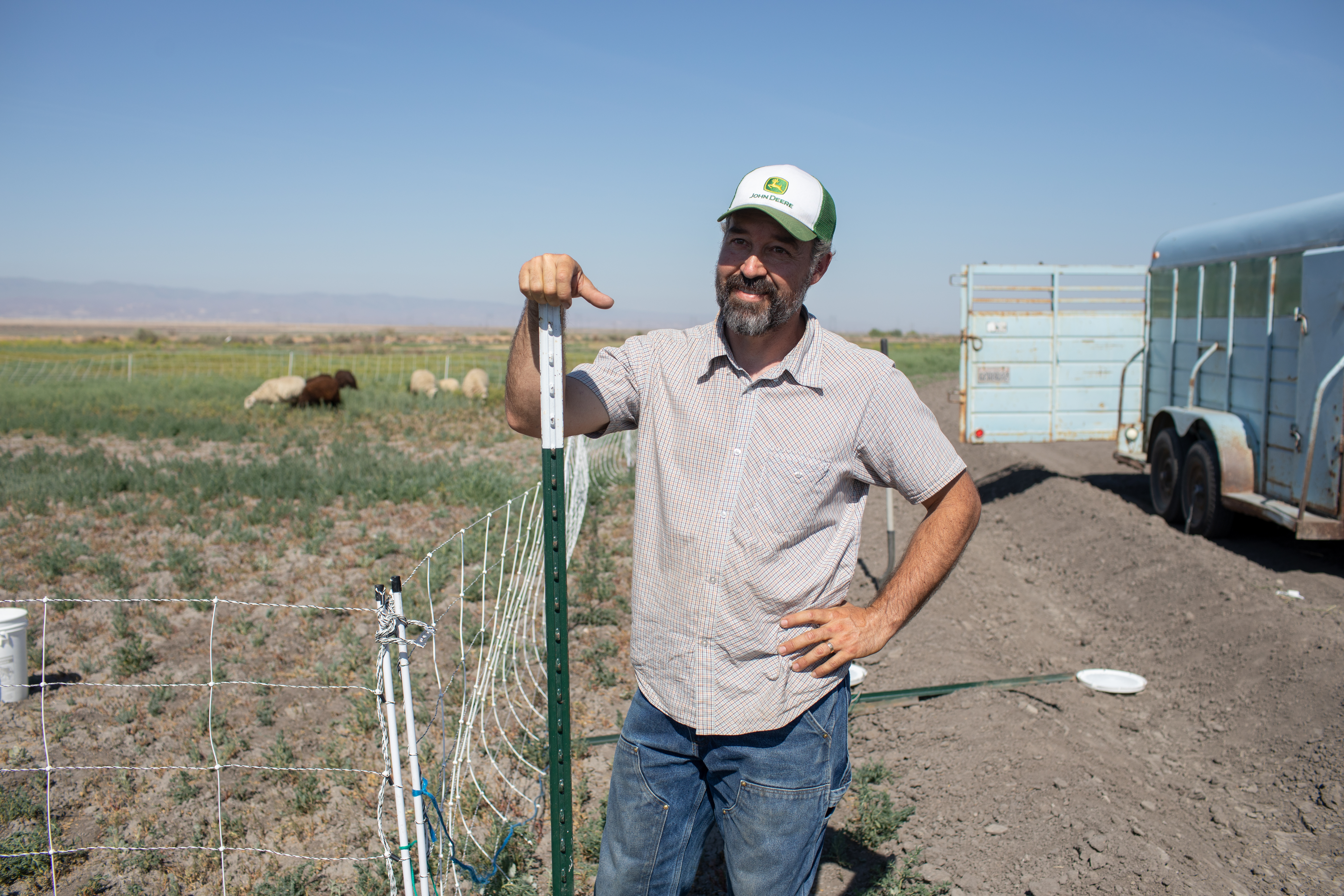
At his Buttonwillow model project, Nathanael Siemens is striking out from the cotton status quo, but it’s not a solo endeavor — he has found support and a sense of impact in partnering with researchers, farmers, and technical service providers.
By working in partnership, each shift in practice is not just ‘entertained’ but encouraged. This winter, after Fibershed delivered a Citizen Science Soil Sampling kit to Siemens, he reflected: “I’ve taken lots of soil samples on farms before, but today was decidedly different. Maybe it is because I am so optimistic about the potential for positive impact. Maybe it was the sublime sunset. Or maybe, it was just the simple label on the box “citizen soil test kit” that made me feel a little more empowered as a participant in something bigger.”
At 44, Siemens is one of the younger farmers in the San Joaquin Valley and that youthful energy, he says, laughing, might be the secret to their success. “I still feel young at heart and am curious to learn.”





